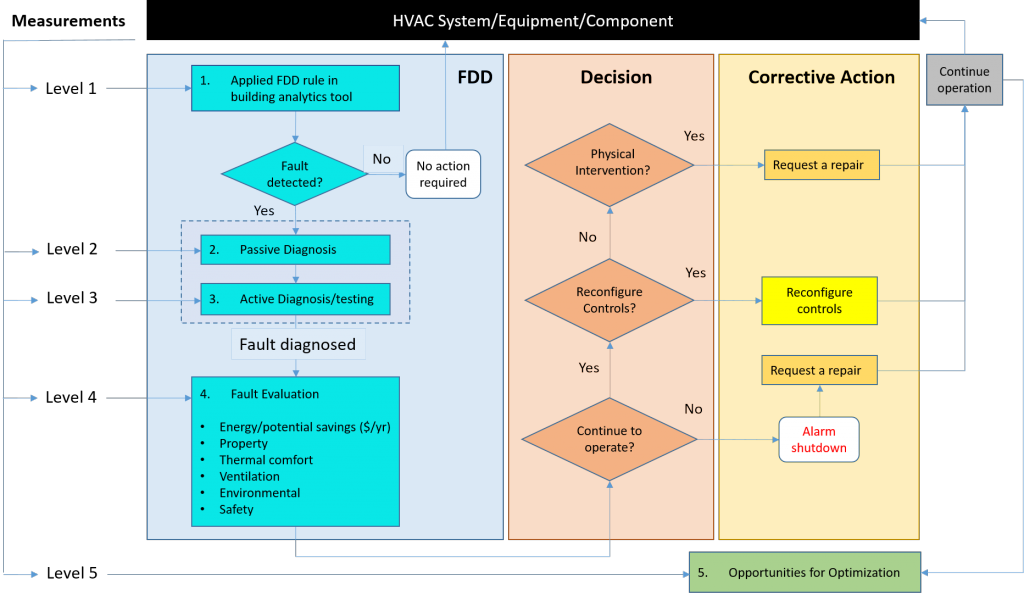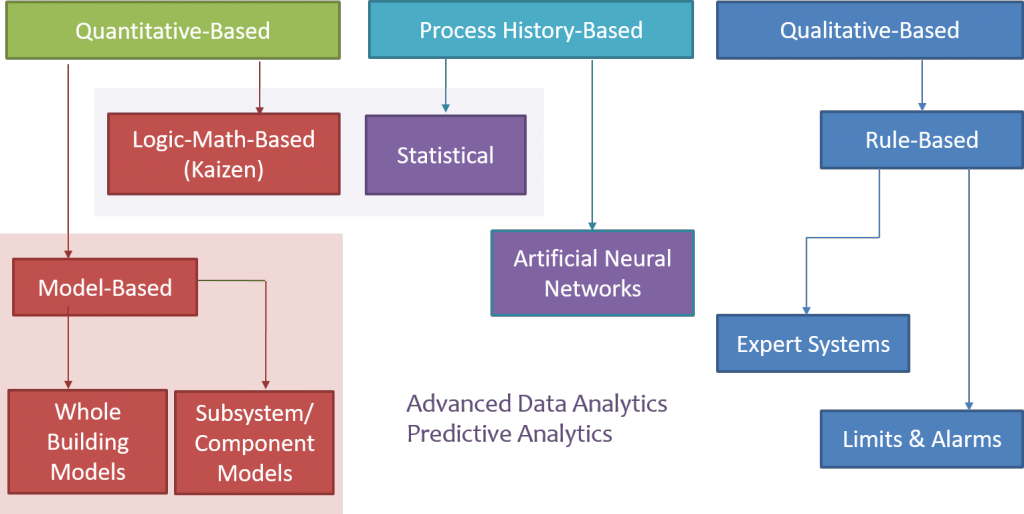Goal – Building systems and occupants tend mask building design or operational faults. Thus, faults remain unnoticed for years until the consequences become visible. Therefore, systems optimization needs to be preceded by systematic and continuous fault detection and diagnosis. The goal of this project is to investigate methods and algorithms to help detect and diagnose faults, quantify their impacts on performance, and develop simulation models and optimization algorithms to optimize performance. The focus is on indoor climate systems and indoor environmental performance.
Question: How can we assess with confidence that we are delivering at any time the required amounts of outdoor air for the occupancy?

(Figure adapted from: Katipamula S, and MR Brambley. 2005. “Methods for Fault Detection, Diagnostics and Prognostics for Building Systems ‐ A Review Part I”. HVAC & R Research 11(1):3‐25)

Methods:
- Building management system (BMS)
- Building systems historic data
- Dynamic systems modeling and simulation
- Co-simulation: coupling of simulation tools and the BMS
Publications:
- Performance study report 3. (2017). Using Building Analytics for Fault Detection & Diagnosis: A Case Study on an Educational Building at BCIT. Abbas Rangwala and Rodrigo Mora. Submitted to the facilities department at BCIT.
Posters:

“What drives a good part of the industry is risk mitigation, failure… if you get it wrong, there are consequences for it. We have two things we do in this group: we try to do good things, but even more important is preventing the bad things. And in preventing the bad things, we do the good things…”
Joe Lstibuerk (Building Science Corporation)
References
- Yan B., Li X., Malkawi A., and Augenbroe G. (2017). Quantifying uncertainty in outdoor airflow control and its impacts on building performance simulation and fault detection, Energy and Buildings, Volume 134, 1 January 2017, Pages 115-128.